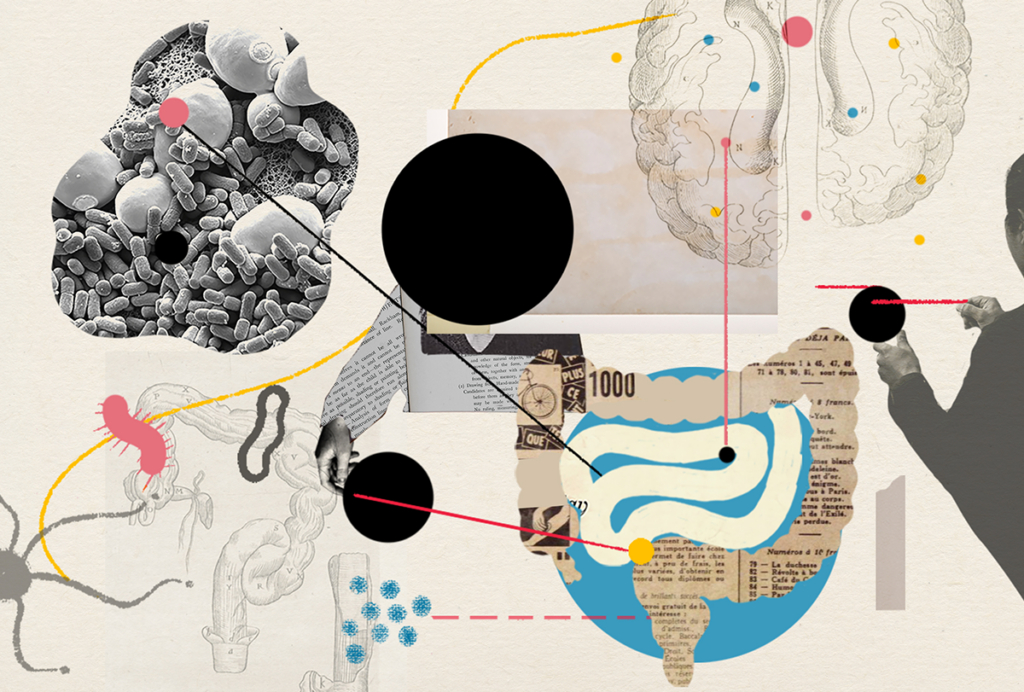Study finds weak genetic link between autism and intelligence
Autism and intellectual disability often occur together, but in most cases that overlap is not genetic, according to a study of twin pairs published in the American Journal of Medical Genetics. Unraveling this link might help researchers pinpoint brain circuits involved in both conditions, and better understand the diversity of symptoms in the autism spectrum, experts say.
Autism and intellectual disability often occur together, but in most cases that overlap is not genetic, according to a study of twin pairs in the July issue of the American Journal of Medical Genetics1.
Unraveling this link might help researchers pinpoint brain circuits involved in both conditions, and better understand the diversity of symptoms in the autism spectrum, experts say.
“This result helps explain why one twin might have autism and a very low [intelligence quotient] while the other twin also has autism but no intellectual disability at all,” notes Catherine Lord, professor of psychology at the University of Michigan, who was not involved in the study.
General intelligence, quantified by intelligence quotient (IQ), encompasses an array of memory, language, visual and spatial skills, as well as the capacity to plan and reason. An estimated 40 percent of individuals with autism have significant levels of intellectual disability, defined as an IQ below 52. About 30 percent have IQs between 53 and 70, and the remaining 30 percent score at least 100, the population average2.
Yet the autism spectrum also includes so-called ‘autistic savants,’ who have abnormally high IQs or savant skills, such as an exceptional memory3.
Adding to the complexity, estimates of intellectual disability in autism vary. For instance, the Centers for Disease Control and Prevention reported in 2006 that the proportion of children with autism-like traits who have IQs below 70 ranges from 29.3 percent in Colorado to 51.2 percent in South Carolina4.
Still, autism and intellectual disability occur together often enough that many researchers have speculated that the genes causing autism also give rise to some aspects of general intelligence, such as communication or social skills5. But there is no biological evidence to support this idea.
To test the link between the two conditions, British researchers screened 8,800 young twin pairs, all participants in the Twins Early Development Study at Kings College in London, for common genetic variants in autism-like traits and intelligence.
The twins completed IQ tests at ages 7, 9 and 12 years, and their parents filled out a 31-item questionnaire called the Childhood Autism Spectrum Test (CAST) that helps evaluate autism-like behaviors.
The researchers found that IQ and autism-like traits are stable over time: for both tests, most children get the same scores at age 7 and age 12.
Identical twins, who share 100 percent of their genes, are more similar to each other in IQ scores and in autism-like traits scores than are fraternal twins, who share half their genes. This indicates that IQ and autism-like traits are each influenced by genetic factors, the researchers say.
But interestingly, the researchers found only a modest genetic overlap — a correlation of 0.27 — between low IQ and autism-like traits, they reported in February. A correlation of zero would indicate no statistical relationship, whereas a correlation of one would mean complete overlap.
“Instead of finding one set of genes that explains everything, we found that different genes must control IQ and autistic traits,” says Rosa Hoekstra, professor of psychology at Open University in the U.K. “This study helps illustrate that understanding autism is quite difficult.”
However, because IQ tests require good language skills, this modest correlation may simply reflect communication impairments in children with the disorder, rather than low general intelligence, notes Clara Lajonchere, director of the Autism Genetic Resource Exchange, a large collection of genetic samples from families with autism.
One of the study’s limitations is that it did not use a standardized test for determining autism diagnoses, such as the Autism Diagnostic Observation Schedule.
“CAST has not been validated as a strong or specific measure of autism,” says Lord, who developed ADOS. “We have to be careful to say CAST is about autistic traits, not autism.”
It would be interesting to know the degree to which these findings can be replicated using more rigorous diagnostic measures, Lord adds.
General intelligence:
Understanding which brain regions are impaired in people with low intelligence, and how those patterns overlap with autism, may help explain the relationship between intellectual deficits and the disorder.
Also in February, Ralph Adolphs and colleagues from the California Institute of Technology reported that general intellectual ability does not reside in one region of the brain. Rather, it depends on the brain’s ability to integrate signals from several brain areas, such as those responsible for working memory and language ability6.
Last year his group showed that specific areas of the outer brain are important for an array of cognitive abilities7. For instance, particular sections of the prefrontal cortex are selectively activated during decision-making and processing of complex social information, such as facial expressions.
In the new work, published in Proceedings of the National Academy of Sciences, the team examined 241 individuals who, because of a neurological disease, have distinct lesions in various parts of the brain. The researchers mapped the precise location of each lesion and evaluated how the lack of different regions leads to specific cognitive impairments.
The researchers confirmed older studies finding that the left hemisphere of the cortex is linked to verbal aptitude, such as the ability to comprehend complex sentences, whereas the posterior right hemisphere is associated with visual-spatial skills, such as the ability to arrange pictures in specific patterns.
The team also measured the integrity of participants’ white matter — fibers that transmit impulses and allow different regions to communicate.
Individuals with damaged fibers tend to have lower IQ scores, the study found. This suggests that connections between brain regions are important for general intelligence, says co-investigator David Rudrauf, professor of neurology at the University of Iowa.
These impaired connections may also explain the association between low intelligence and autism, Adolphs says. Some studies have shown that white matter is important in autism, and that individuals with the disorder have weak long-range connections8.
Adolphs has also studied individuals who have agenesis of the corpus callosum9, a rare developmental disorder in which people are born without the massive white matter tract that connects the left and right hemispheres. About one in four of patients with this disorder meets the criteria for autism.
Although abnormalities in white matter may be important players in autism dysfunction, the new twin study suggests that investigating activity patterns in areas involved in speech ability and language processing, such as Broca’s area and Wernicke’s area, may be more fruitful.
“We are very interested in mapping the brain regions important for communication, which is likely to be a domain more relevant to understanding autism,” Adolphs says.
References:
-
Hoekstra R.A. et al. Am. J. Med. Genet. B. Neuropsychiatr. Genet. Epub ahead of print (2010) PubMed
-
Fombonne E. J. Clin. Psychiatry 66, 3-8 (2005) PubMed
-
Howlin P. et al. Philos. Trans. R. Soc. Lond. B. Biol. Sci. 364, 1359-67 (2009) PubMed
-
Rice C. et al. MMWR 58, 1-2 Full Text
-
Nishiyama T. et al. J. Hum. Genet. 54, 56-61 (2009) PubMed
-
Gläscher J. et al. Proc. Natl. Acad. Sci. USA 107, 4705-4708 (2010) PubMed
-
Gläscher J. et al. Neuron 61, 681-691 (2009) PubMed
-
Keary C.J. et al. J. Autism Dev. Disord. 39, 834-841 (2009) PubMed
-
Paul L.K. et al. Nat. Rev. Neurosci. 8, 287-299 (2007) PubMed
Recommended reading

Going against the gut: Q&A with Kevin Mitchell on the autism-microbiome theory
Explore more from The Transmitter

Neurophysiology data-sharing system faces funding cliff


